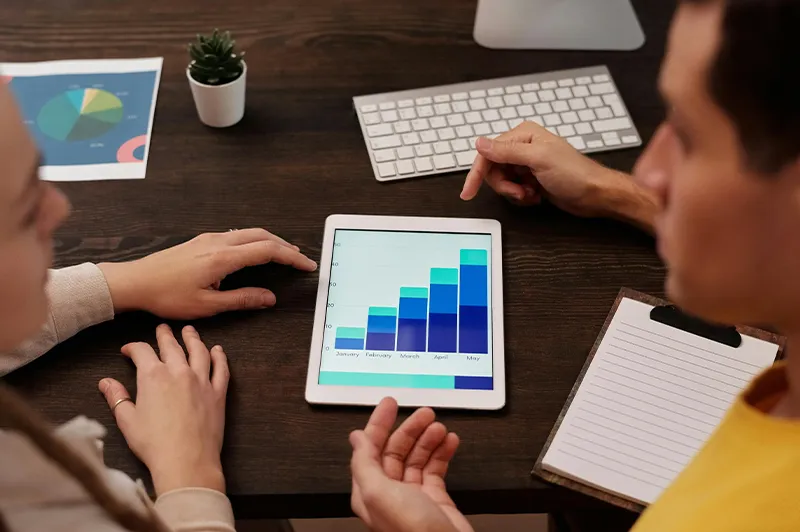SEO and Web Performance: An Inseparable Link
Search Engine Optimization (SEO) relies on many factors, including page load speed. Google favors fast websites because they offer a better user experience. Images often make up over 50% of a page’s total weight. Using a lightweight image format like JPG significantly reduces this weight, which speeds up loading times and directly improves search rankings.
By optimizing your images with the JPG format, you not only meet Google’s technical criteria but also make mobile browsing smoother, an essential factor since the mobile-first index was introduced.
Moreover, Google considers Core Web Vitals, especially the Largest Contentful Paint (LCP), which can be greatly affected by heavy or poorly sized images.
JPG: An Ideal Format for SEO
The JPG format is known for its ability to reduce file sizes while maintaining good visual quality. This makes it a strategic choice to optimize your pages without sacrificing aesthetics. Unlike PNG or GIF, JPG does not support transparency or animations, but it is extremely efficient for photos and large visuals.
Thanks to its broad compatibility with all browsers, CMS platforms (like WordPress or Shopify), and compression tools, JPG is the most widespread image format on the web. Its lightness improves Core Web Vitals, a crucial set of metrics for modern SEO.
In addition, JPG supports various compression levels, allowing you to choose the perfect balance between quality and size for your site’s needs.
Why Convert Your Images to JPG?
By converting your existing images (PNG, GIF, HEIC, etc.) to JPG, you can:
- Reduce your pages’ weight by up to 80%.
- Improve loading times on desktop and mobile.
- Boost your ranking in search results.
- Enhance mobile navigation, crucial for today’s audience.
- Lower bandwidth usage on both server and user sides.
Whether you’re a developer, designer, e-commerce owner, or blogger, the JPG format is an easy lever to improve your visibility.
Leaving your images in heavy formats like BMP or TIFF, on the other hand, can hurt your SEO and frustrate visitors with long load times.
How to Easily Convert Your Images to JPG
To convert your images quickly, use our free tool
MakeJPG. It works directly in your browser and supports many formats (PNG, GIF, WEBP, HEIC, JFIF, etc.). Here’s how:
- Go to MakeJPG.com.
- Upload your image.
- Click “Convert to JPG”.
- Instantly download your optimized file.
Fast, easy, no sign-up, and 100% free.
For advanced needs like bulk conversions, check out our professional solutions available upon request.
Best SEO Practices with JPG Images
- Rename your files with relevant keywords (e.g.,
running-shoes-men.jpg). - Add descriptive
alt attributes to every image for accessibility and SEO. - Serve images at the right size (no larger than necessary for display).
- Use
<picture> or srcset for responsive images. - Compress your JPG files with a tool like MakeJPG for even better performance.
- Add image sitemaps in Google Search Console to help index your visuals.
These simple yet powerful tips can significantly boost your organic visibility.
Conclusion: JPG, An Essential Ally for Modern SEO
The JPG format combines
visual quality,
lightness, and
maximum compatibility, making it a powerful tool to speed up websites and improve their SEO. By optimizing your visuals with JPG, you’ll gain
faster load times, better
user experience, and stronger
SEO.
Remember: speed and accessibility are key for a high-performing website. Start today with
MakeJPG to convert your images in a few clicks and push your pages higher in Google’s results.
